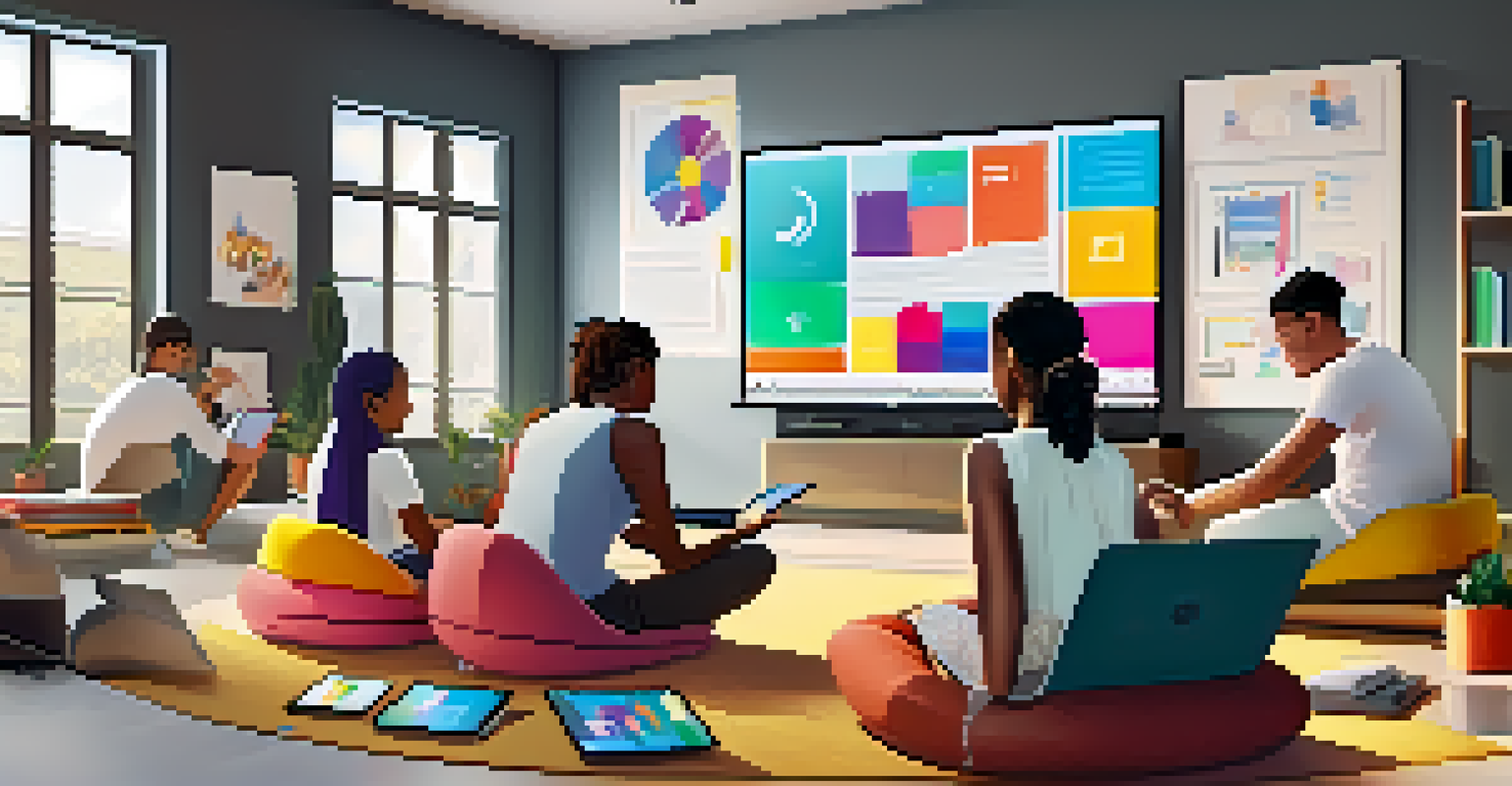The Neuroscience of Learning Styles in Online Education

What Are Learning Styles and Why Do They Matter?
Learning styles refer to the various ways individuals prefer to learn. For example, some might grasp concepts better through visual aids, while others excel through hands-on experiences or auditory explanations. Understanding these styles helps educators tailor their teaching methods to accommodate diverse learners.
The mind is not a vessel to be filled, but a fire to be kindled.
In online education, recognizing learning styles can enhance engagement and retention. By providing content in multiple formats—videos, articles, interactive quizzes—educators can cater to different preferences. This flexibility is crucial as online learners often have varied backgrounds and experiences.
However, it’s essential to note that the idea of fixed learning styles is being challenged by recent neuroscience research. Instead of strictly categorizing learners, it may be more beneficial to recognize that people can adapt their learning approaches depending on the context and material.
Neuroscience Insights on Learning Styles
Recent studies in neuroscience suggest that our brains are incredibly adaptable, often referred to as neuroplasticity. This means that the way we learn can change over time and with experience. For instance, while someone may initially prefer visual learning, they can develop effective auditory skills through practice.

Neuroscientists have found that specific brain regions are activated during different types of learning. For example, the occipital lobe is involved in visual processing, while the temporal lobe is linked to auditory information. By incorporating various teaching methods, educators can stimulate multiple areas of the brain, leading to a more comprehensive learning experience.
Learning Styles Enhance Education
Recognizing diverse learning styles allows educators to tailor their teaching methods, improving engagement and retention in online education.
This understanding encourages a more holistic approach to online education. Instead of sticking rigidly to one learning style, educators can create a dynamic learning environment that nurtures growth and adaptation, helping students to cultivate skills across various modalities.
The Role of Memory in Learning Styles
Memory plays a key role in how we process and retain information. In learning styles, this means that different modalities can impact memory retention differently. For instance, visual learners might remember information better when it's paired with images, while auditory learners may excel with discussions and lectures.
Learning is not the product of teaching. Learning is the product of the activity of learners.
Neuroscience shows that memory is not a single process but involves multiple systems, including short-term and long-term memory. By engaging various senses—like sight, sound, and touch—students can create stronger memory connections. This technique, often referred to as multi-sensory learning, is particularly effective in online environments.
Thus, understanding the interplay between memory and learning styles can help educators design courses that enhance recall. This adaptability is especially important in online education, where students often face distractions and need strategies to retain information effectively.
Online Tools and Resources for Diverse Learning Styles
With the rise of online education, a plethora of tools and resources is now available to cater to different learning styles. For example, platforms like Khan Academy offer video tutorials for visual learners, while forums and discussion boards provide a space for auditory learners to engage with peers.
Interactive tools like quizzes and gamified assessments can also appeal to kinesthetic learners who thrive on hands-on activities. These resources not only make learning more engaging but also allow students to explore content in ways that resonate with their preferences.
Neuroscience Supports Adaptability
Recent neuroscience research highlights the brain's adaptability, suggesting that learners can develop various skills beyond their initial preferences.
By leveraging these diverse tools, educators can foster a more inclusive online learning environment. This adaptability not only benefits individual learners but also enriches the overall educational experience, making it more dynamic and effective.
The Limitations of Learning Styles in Practice
While the concept of learning styles is popular, it’s essential to recognize its limitations. Recent research suggests that categorizing learners strictly can lead to oversimplification. For instance, a learner may not fit neatly into one category; they might benefit from visual aids one day and prefer auditory methods the next.
Additionally, focusing too heavily on learning styles can detract from the development of critical thinking and problem-solving skills. Instead of reinforcing a single style, educators should encourage flexibility and adaptability in learning approaches, allowing students to tackle challenges through various lenses.
This broader perspective fosters a growth mindset, where learners are more willing to step outside their comfort zones. By emphasizing the importance of diverse strategies, educators can equip students with the skills needed to thrive in a constantly changing world.
The Impact of Motivation on Learning Styles
Motivation significantly influences how we engage with learning materials. When students are motivated, they tend to explore and utilize different learning styles more freely. For example, a motivated learner might seek out videos, podcasts, and interactive modules to understand a concept thoroughly.
Neuroscience indicates that motivation activates the brain's reward pathways, which can enhance learning and memory retention. When educators create an engaging online environment that sparks motivation, students are more likely to experiment with various learning styles, leading to a richer educational experience.
Motivation Fuels Learning Success
Motivated learners are more likely to explore different learning styles, enriching their educational experience and enhancing memory retention.
Thus, fostering motivation should be a priority for educators. By incorporating gamification, real-world applications, and opportunities for collaboration, they can inspire students to embrace diverse learning methods and enhance their overall learning journey.
Future Directions in Learning Styles Research
As technology continues to evolve, so does our understanding of learning styles and neuroscience. Future research will likely delve deeper into how digital platforms can be optimized to cater to diverse learners. This includes exploring adaptive learning technologies that tailor content in real-time based on student interactions.
We can also expect advancements in neuroimaging techniques to provide insights into how different learning styles affect brain activity. This could lead to a more nuanced understanding of how to effectively teach diverse learners in online settings, paving the way for personalized education.

Ultimately, the goal of this ongoing research is to create more effective and inclusive online education experiences. By staying informed and adapting to new findings, educators can better support their students in navigating the complexities of learning in the digital age.